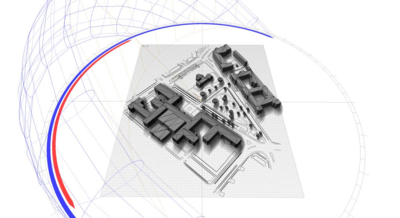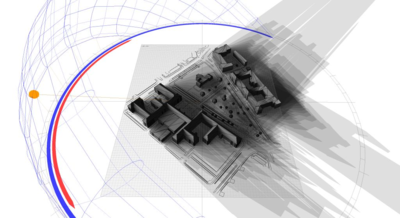atom07:Analysis
Contents |
Site
In front of BK-City (Delft) lies the "De Vries van Heyplantsoen". In this park we are given the freedom to design an intervention to improve the given situation. By improving the (qualities of) site we try to let more people enjoy and experience the site. The goal of our proposal is to have more actors populate the site. In this way we make sure the qualities of the park won't get lost in time. By attracting people we add new/different qualities to the park -through an intervention which is able to adapt to the different needs of all the users. Simultaneously we will try to enrich ourselves with the Hyperbody way of thinking. The exact goals can be found under the Mission.
Analysis
There are three categories of investigation that is followed for the project.
Calculations and data collected from the three analysis, will help inform the design, use and size of the project. We will attempt to find a hyper-rational method for approaching the design challenge. The attempt is to move away from traditional design analysis where the architect plays the dominant role in design.
1. Site Analysis, study of sun shading, sun radiation, noise and wind study.
2. Actors.
3. Analysis of 'points of interest' on the site.
The site analysis will create accurate calculations for comfortable living and meeting places, whilst the analysis of the 'points of interest' is an intervention that is created by actors, introducing a layer of cultural data which can be added to the calculations. A survey of the actors wil also give some feedback and other perspectives and opinions of the site.
Site Analysis
Through the ecotect analysis of the local sunlight radiation and shadow ranges on both days of summer solstice and winter soltice, we can get an insight into the climate condition of the site.
(not finished yet)
Actors
Connection Actors
Input & Output Actors
Distinguished from the traditional designing methodology in which architects will dominate every part of the whole designing process by applying the up-down styling intervention and previous experiences, we try to apply a bottom-up design method to build up a connection between the building and the actors in which the persistent information input and output will be available.In brief, actors could input their own information and desires of different programs to our building, our building will output relevant data and possiblilities to them to meet their demands.Then,the actors will probably give the feedbacks to the building again.As a result,an active loop of information exchange and interactivity between building and actors will be generated in this design strategy.
Input Actors
Possible demands(input data):Exhibiton,Party,Eating,Reading,Meeting...
Output Actors
Possible solutions(output data):
Exhibiton:linear space,
Party:wide and open space,
Eating:private or open space,
Reading:enclosed and private space,
Meeting:clustered space...
Operation:
Actors can consult the information desk where we will provide them with some possibilities or suggestions of spatial arrangement instead of fixed functions.Then they can organize the functions all by themselves by combining the units into different space.(refer to Concept)
Interviews
- Top Board technical meeting point delft (possible client and reference)
- Alumni office interview @TUDelft
Points of interest
We have assigned a few activities to the site - and linked them with colours.
Party - Red
Open Space/Sport - Green
Have lunch/snacks - Blue
Meeting Place - Yellow
Statue - Orange
Building - Purple
Part of our research is to ask members of public/academics/children to help us identify areas on the site which have these qualities. By giving each actor different coloured sticks, we will ask them to place the sticks on different parts of the site. For example, an actor might plant the blue stick (lunch area) close to a tree or bench and the orange stick (for a statue) in an open part of the park. By having many actors making their own decisions where they think the best activities might take place, we will have collective data from many sources which can help indicate the need or desire for specific programmes. We will use GPRS points to mark the positions of the sticks that are planted by actors. This will help us identify real time data from reliable sources, giving the site analysis a clear and accurate definition of the desired tasks and at the same time reducing the need for architects to make assumptions about the site.
Our research has given rise to an integrated network of structures that can move vertically as the programme of an user requires it.


